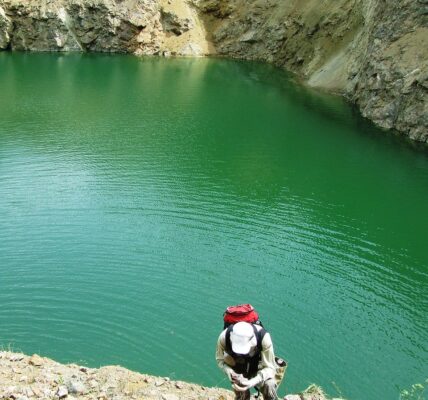Metamorphic rocks are rocks that have been subjected to metamorphism, i.e. a process that has changed the texture and size of grain aggregates, mineral composition without a significant change in chemical composition. Metamorphism is impossible without the influence of temperature, fluids and pressure. There are ortho- and parametamorphic rocks, which were formed by metamorphism of igneous and sedimentary rocks, respectively.
Distinguish:
metapelites – derivatives of acidic sedimentary and igneous rocks (mudstones, siltstones, sandstones, granitoid volcanics and intrusive rocks) and
metabasites – derivatives of basic sedimentary and igneous rocks.
Carbonate rocks – marbles, calcifiers, carbonate cataclasites – stand apart. According to the nature of temperature influence, regional and contact metamorphosed rocks are distinguished.
Examples of metamorphic rocks are shale, quartzite, phyllite, marble, gneiss.
Metamorphism is always geologically connected with tectonic or magmatic activity in the Earth’s crust. In its upper layers it is the result of magmatic intrusive activity, and in deeper layers it is caused by tectonic regional movements of horizontal or vertical direction.
During metamorphism, both the destruction of the original rock (disappearance of the original structure and minerals) and the formation of a new rock with the appearance of new textures, structures and minerals occur simultaneously. Such rock is mostly in a solid state, not subject to dissolution or melting.
Metamorphic rocks are formed by the action of high temperatures and pressure on previously formed rocks: magmatic effusive, magmatic intrusive or sedimentary. There are 2 types of metamorphic formation – regional and contact. The first type of metamorphic rock formation is associated with the pressure of loads on the rock strata that lie above or are flowed by heat flows that burst out from the depths of the planet. The second type is characterized by the introduction of magmatic masses into relatively narrow areas. As a result, there is contact with the crust of the earth, and hard rocks are obtained – hornblende, garnet rocks, marble, spotted and knotty shales.
Both processes of metamorphic rocks formation provoke structural transformations and recrystallization. It is worth noting that due to such ways of rock formation, they contain the following minerals: chlorite, disten, andalusite, cordierite, fan, graphite, sillimanite, staurolite, talc, prenite, corundum. They are absent in sedimentary and igneous rocks.




